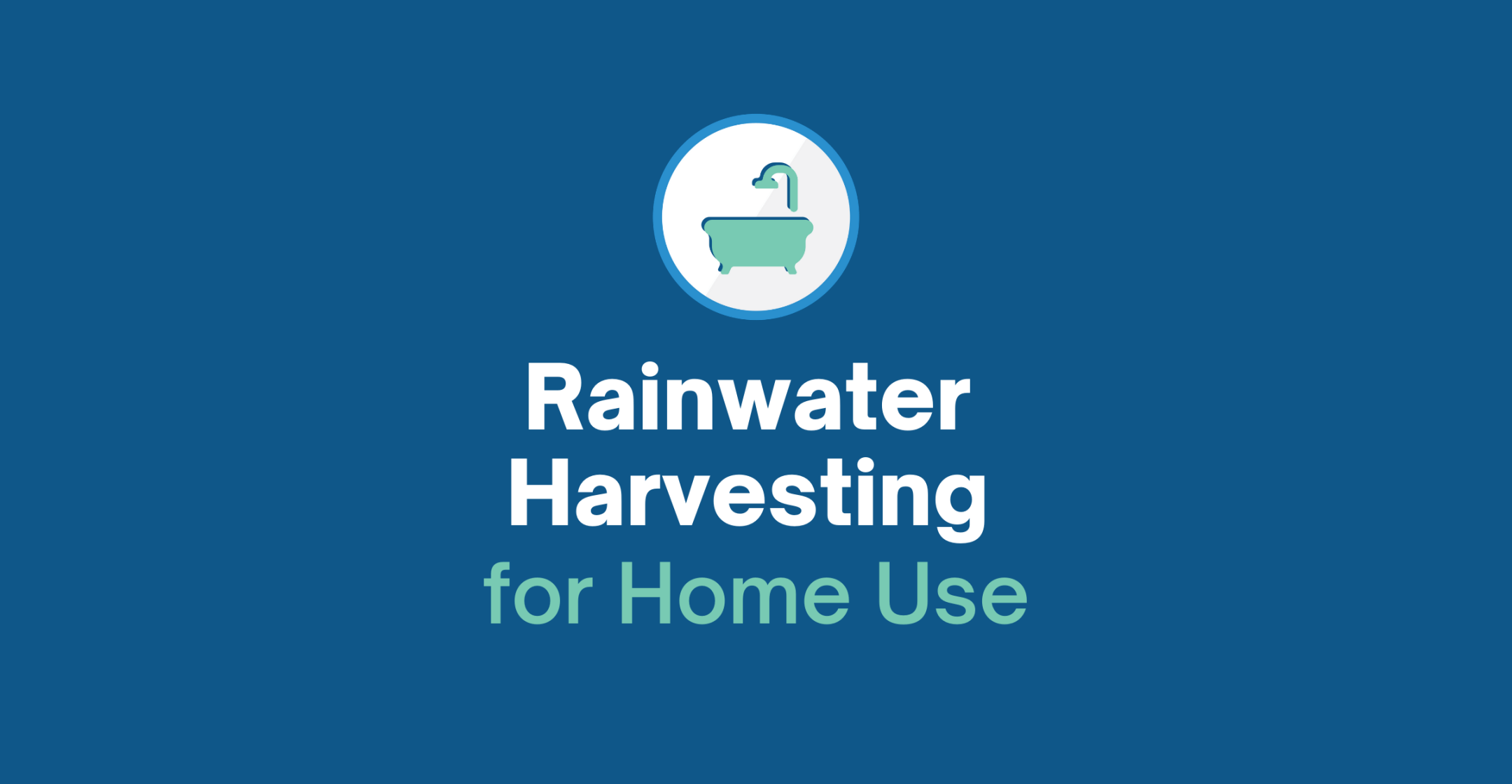How is Rainwater Harvested for Home Use?

Rainwater harvesting provides water for a wide array of applications, including home indoor potable use such as drinking, cooking, washing, and bathing. It can also be used for irrigation, livestock, stormwater management, and on-site water storage. The limiting factor of harvested rainwater is not the application, but rather how the system is designed which will determine functionality. For example, a system designed for indoor potable use will differ from one designed for irrigation or livestock.
Rainwater Harvesting – What is it?
Rainwater harvesting is the process of collecting rooftop rainwater and storing it for future use (more on uses below). Oftentimes, when people think of rainwater harvesting, they think of an old cistern at grandma’s farm. While the idea is similar, the design and execution are significantly different.
For instance, a properly designed rainwater harvesting system will go through multiple types and stages of filtration. A pre-storage filter will rid the rainwater of large particulates and contaminants before entering the system, the storage itself will act as a filtration stage as the biofilm works, and before entering the home it will go through a multi-stage filtration and purification panel.
While it is growing in popularity in the United States, rainwater harvesting is common practice in other areas of the world such as Europe and Australia.
Homeowners across the states are using harvested rainwater as the primary, and in many cases only, water source for their home. The advancements in rainwater collection design and filtration technology have made this a reality.
A good way to think about rainwater harvesting is to say it’s the solar power of water. But the investment needed and technology to supply a whole-home easily has advanced much further than solar at this point. Meaning, it is a lot easier to have your whole–home water supply be sourced via harvested rainwater than it is for your whole-home to electric supply to be sourced via solar power.
Uses for Rainwater Harvesting
Home–Use: One of the best applications for rainwater harvesting, and what this article will focus on primarily, is using it as a whole-house water supply. This means using harvested rainwater in place of a normal city water or well water supply. Using rainwater for every water need in your home, such as drinking, cooking, washing, bathing, and more, is now possible! (More on rainwater harvesting for home-use below)
Irrigation: Rainwater harvesting can also be used for light irrigation purposes. The reason it is limited in irrigation is that it takes a substantial amount of water to properly irrigate a landscape. It can certainly supplement irrigation for a large landscape design, but using harvested rainwater as the sole-source for irrigation might not be possible due to water needs.
Livestock: Another great use for rainwater harvesting is feeding farm animals and livestock. Either for smaller farms, homesteading, or even large-farm applications. The good thing about rainwater harvesting in this application is that farms generally have large buildings to house the animals, this is a great catchment source for rainwater. The bigger the roof, the more rainwater which is able to be collected.
Stormwater Management: This issue of site water runoff is becoming more apparent as home site regulations become stringent in regard to water leaving the premises. In many regions, the home site must guarantee the first inch of rainwater to remain within the boundaries of the land. This prevents stormwater runoff from interfering with other properties. Rainwater harvesting offers a solution to not only maintain stormwater control, but also provide water as an asset if desired.
On-Site Water Storage: Whether it be for fire protection, or simply a backup water supply, a rainwater collection system can provide a great on-site water storage solution. This can be especially attractive for rural areas that could experience catastrophe without access to a substantial amount of water in case of a fire.
The Benefits of Rainwater Harvesting
The Benefits of Rainwater Harvesting
When it comes to rainwater harvesting, there are many benefits to expect when using it for your home.
- Water Quality – Harvested rainwater provides some of the highest quality of water available for residential use. This starts with the fact that rainwater just fell from nature’s big distiller in the sky, the clouds. The water is then ran through multiple stages of filtration which brings the water to incredibly low TDS (total dissolved solids).
- Water Availability – While this might not apply to most homeowners, there are many areas where getting a reliable water supply can be rather difficult. Rainwater harvesting gives the ability to take a home and give it a private water supply that is reliable, good quality, excellent pressure, and can supply the entire home.
- Self-Sustainability – This speaks to the benefit mentioned above, but if you are trying to build a home that is self-reliant with things such as solar power, livestock, or gardening. Rainwater harvesting can be a great addition to your homesteading lifestyle.
- Eco-Friendly – Rainwater harvesting is the “greenest” way to supply water for your home. It’s a self-containing system that lasts decades, and parts can easily be exchanged when needed. It requires very little power, and for the most part is self-sustaining.
- Naturally Soft – Another major benefit of rainwater is the fact that it is naturally soft. You may have heard of hard water, and most water that is publicly accessible has at least some hardness (calcium and magnesium) in it, but harvested rainwater is completely soft without having to use a water softener.
- Private Water Supply – Rainwater harvesting provides the homeowner with their very own water source of which they have complete control.
- Stormwater Management – Runoff management of rainwater can be a serious problem for some home sites. Rainwater harvesting provides a great solution to this problem.
Rainwater Harvesting for Home-Use
If using rainwater harvesting for your home is of interest to you, then you’re in luck! Rainwater harvesting works very well for home-use. And yes, the rainwater can be used for all your water needs including drinking, cooking, washing, bathing, watering, and more.
When using rainwater for your home, it can be easily integrated through catching rooftop rainwater, sending it through a pre-storage filter, and then sent to storage. After leaving storage, the water goes through a filtration and purification panel and is then sent directly into the home’s plumbing system
The rainwater is under complete control of the homeowner. This means that the water pressure is excellent, and the homeowner can live and use their water like a normal American homeowner.
The system itself requires very little maintenance and upkeep. You can expect a simple service of the system once or twice per year.
Can My Home Harvest Enough Rainwater?
In many cases the answer is YES. Obviously, the larger your roof surface area is, the more rainwater you can collect. But homeowners that we work with are often pleasantly surprised of just how much water they can collect. And when compared to their estimated use, rainwater is often more than sufficient, but even provides water with extreme excess.
Ready to Take Control of Your Water Supply?
Don’t wait for water shortages or unreliable sources to disrupt your life. With our Rainwater Harvesting systems, you can enjoy a sustainable, reliable, and completely self-sufficient water solution tailored to your home’s needs.

